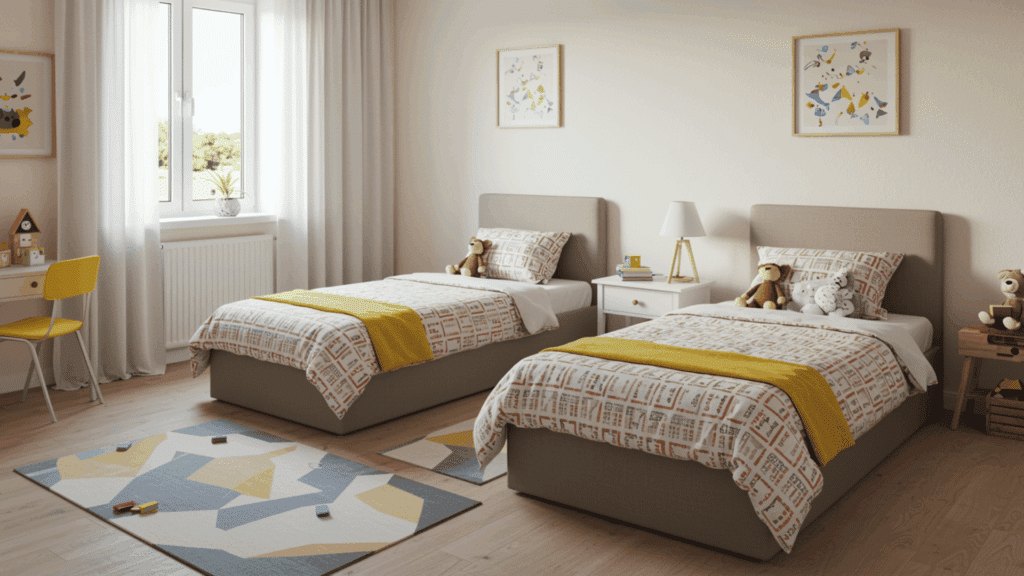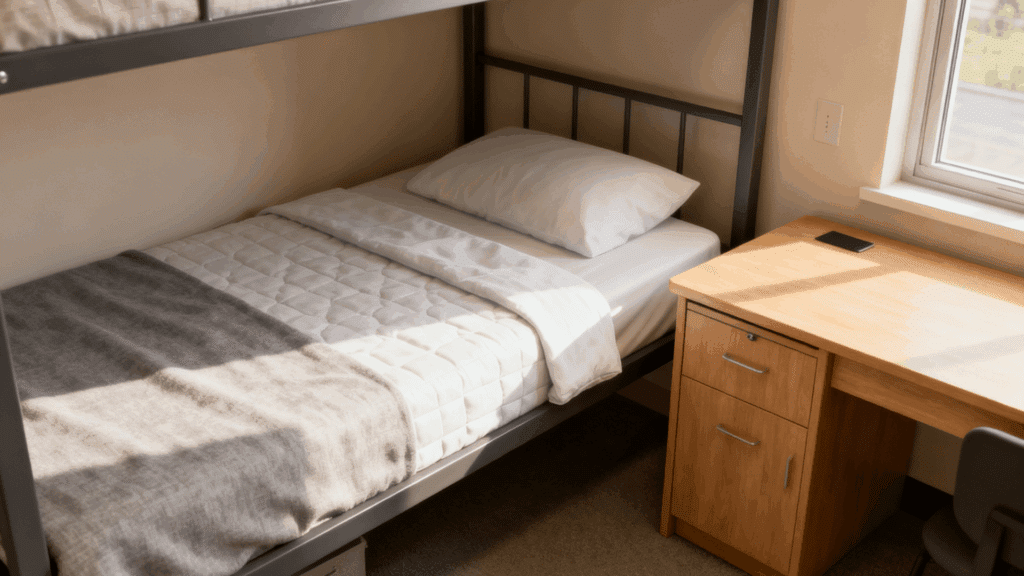When furnishing a bedroom, understanding the width of twin beds is crucial for making informed decisions.
If you’re setting up a child’s room, a guest bedroom, or a college dormitory, knowing the precise twin bed dimensions ensures optimal space utilization and comfort.
This compact width makes twin beds incredibly versatile for smaller spaces, yet many shoppers remain uncertain about whether these dimensions truly suit their needs.
Let’s see everything you need to know about twin bed measurements to make the perfect choice for your space.
What is the Width of a Twin Bed?
A twin bed has a standard width of 38 inches, making it one of the most space-efficient mattress sizes available.
This compact width is ideal for kids’ bedrooms, small guest rooms, studio apartments, and bunk bed setups.
The narrow design allows you to maximize floor area while still providing a comfortable sleeping surface for one person.
Although the width is consistent across most brands, slight variations of one to two inches may occur due to mattress edges or manufacturing differences.
It’s also important to note that the Twin XL retains the same width of 38 inches but offers extra length for taller sleepers.
Overall, the twin’s slim profile makes it a practical and versatile option for tight spaces
Twin vs. Twin XL: Which Width Should You Choose?
Choosing between a twin and a Twin XL starts with understanding how their dimensions differ.
1. Twin Beds

The standard twin bed measures 38 inches wide by 75 inches long, making it the most compact adult mattress option available.
This classic size works perfectly for children’s bedrooms, bunk beds, and smaller guest rooms where space efficiency matters most. Twin beds accommodate single sleepers comfortably.
Their narrow width allows multiple beds in shared rooms, maximizes floor space for play areas, and makes them easy to move through narrow doorways during moves.
2. Twin XL Beds

Twin XL beds maintain the same 38-inch width as standard twins but extend to 80 inches in length, five extra inches for taller sleepers.
This size has become the college dormitory standard, accommodating growing teenagers and adults up to 6’4″ comfortably. The additional length prevents feet from hanging off the edge of the mattress.
Twin XL mattresses cost slightly more than standard twins but offer significantly better comfort for taller individuals without requiring additional floor space in compact rooms.
Types of Twin Bed Frames and How Width Can Vary
| Frame Type | Width Difference | Reason |
|---|---|---|
| Platform Bed | +1–3 in | Thicker side panels |
| Metal Frame | 0–1 in | Slim metal rails |
| Box Spring + Frame | +1–2 in | A box spring adds bulk |
| Wood Frame | +2–5 in | Wide wooden rails |
| Bunk Bed | +1–3 in | Guard rails & posts |
| Daybed | +2–6 in | Side/back panels |
| Trundle Bed | +2–4 in | Trundle enclosure |
| Storage Bed | +3–6 in | Built-in drawers |
| Sleigh Bed | +3–5 in | Thick curved frame |
Is a Twin Bed Right for You?
A twin bed is best for anyone who needs a compact, comfortable sleeping option without taking up much floor space.
It’s an ideal choice for children, especially those transitioning from a toddler bed, because it provides enough room to sleep comfortably while fitting well in smaller bedrooms.
Teens and single adults can also benefit from a twin bed if they prefer a minimalist setup or have limited square footage.
It’s widely used in guest rooms, studio apartments, and shared spaces where maximizing space is essential.
While not suitable for couples or very tall sleepers, a twin bed is a practical and budget-friendly choice for solo sleepers who value efficiency and versatility.
Pros and Cons of Choosing a Twin Bed
To decide whether a twin bed is right for your space, review the main pros and cons below.
| Pros | Cons |
|---|---|
| Fits easily in small bedrooms | Too narrow for adults who move a lot |
| Most affordable mattress size | Not suitable for couples |
| Lightweight and easy to move | Limited sleeping space for teens or tall sleepers (unless Twin XL) |
| Works well for kids’ rooms, bunk beds, and guest rooms | Can feel cramped for larger body types |
| Wide range of frame styles available | Shorter length may be uncomfortable (75″) unless choosing Twin XL |
| Ideal for maximizing floor space | Less versatile for long-term use as children grow |
Conclusion
Understanding the width of twin bed options empowers you to make confident bedroom furniture decisions that balance space constraints with comfort needs.
Before purchasing, always measure your available room dimensions, consider who’ll be using the bed, and account for additional furniture placement.
The compact width makes twin beds ideal for maximizing space while maintaining functionality and comfort.
Measure your room today, compare your specific needs against standard twin bed dimensions, and make your bedroom into a comfortable, well-planned retreat that works beautifully for years!

